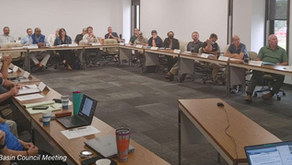How Context Matters in Successful Asset Management Implementation
- JD Solomon
- Jan 29, 2024
- 4 min read

The planning phase is complete, so it is time to roll into the implementation phase! Not so fast. It's time to check the organizational context once again. Context matters when it comes to successful asset management implementation, both in terms of the nuts-and-bolts aspects and for effective communication.
The Foundation of the Plan
The Strategic Asset Management and any tactical plan should have accounted for organizational context. After all, A Strategic Asset Management Plan (SAMP) is a planning tool that clarifies intentions, priorities, and practices. A SAMP considers the combination of organizational needs, customer expectations, the realities of existing assets, and organizational capacity.
The reality is that many plans do not consider the organizational context. And for even those that do, it takes at least six months to a year to develop and approve the plan. Things change.
Context Matters for Successful Implementation
Context matters for successful asset management implementation. First, the implementation must be well aligned with the current organizational capacity. This includes not only the number of resources but also the current knowledge, skills, and abilities of the human resources. Second, expectations through effective communication must be established, maintained, and fulfilled.
Every asset management program has a primary focus.
A. Asset Sustainment
This focus is the "take care of what we own" strategy. It's most common when an organization needs to do the basics better and its critical assets are performing erratically. An asset sustainment focus is common to about half of all asset management programs.
B. Asset Growth
We know many new assets are coming, but we need to take care of what we own. A growth plan for the portfolio, reflecting forecasted renewal and replacement demand and investment levels, is needed. The end game is to secure the assets and associated resources the organization needs before it falls further behind.
C. Activity-oriented
This top-end focus is associated with programs with aging critical assets. The organization has done a good job of maintaining its assets; it’s just that the paradigms have to shift as the assets age. Some examples of activities include the adoption of more condition-based maintenance methods, different reliability analytics, and more focus on asset obsolescence and replacement values.
D. Technologies (Change Initiatives)
Many organizations shift to technology to offset the shortage of skilled workers. For example, Industry 4.0, the fourth industrial revolution, is a trend of automation and data interconnection, wireless sensors, cloud computing, artificial intelligence, machine learning, and big data. Whether or not this shift is combined with energy efficiency or resilience initiatives, some asset management programs focus more on the technology that supports assets than the assets themselves.
E. Managed Decline of Assets
Some organizations are shrinking or experiencing losses in their demand. Mothballing, decommissioning, repurposing, or incrementally bringing assets offline is the program's purpose. One example I experienced was short-term asset impacts related to the merger of Dow and DuPont. Another was the mothballing of water treatment plants following the 2008-2009 economic collapse. This type of asset management program has an entirely different flavor than traditional ones.
No Implementation is Pure
Most asset management programs are not purely one or another. However, the planners and implementers should understand the dominant strategy of the overall program.
More importantly, every organization has a dominant driver for the asset management program. That is the organizational context, which shifts and morphs over the life of an asset management program.
Why Asset Management Implementation Fails
The top reasons why most asset management implementations fail are they lose support from the chief executive, do not maintain adequate funding, and are misaligned with organizational capacity. These things are secured by staying in sync with the organization's context.
Continually Validate the Context for Success
Here are a few things that can be done the validate the context:
Formally document the organizational context at the beginning and end of the plan development.
Validate the context during the chartering process of the implementation phase.
Assign a driver for each implementation activity. For example, is the activity primarily to improve an existing practice, prepare for a wave of new assets, or improve a technology?
Plan for effective communication. That is more than merely having a communication plan.
Communicate with FINESSE. That includes all seven aspects of the FINESSE fishbone diagram, but in particular, empathetic listening and continual contact with senior management are highlighted here.
Moving Forward
Plans are important because they outline the ‘what’ that needs to be done for successful implementation. However, plans do not explain the ‘how’ to get things done. Continually re-checking organizational context is one of those essential things to do in successful asset management implementations. Context matters!

Register now for this free webinar on becoming more effective at "Communicating Asset Management to Senior Management." (sponsored by Communicating with FINESSE).
JD Solomon Inc. provides solutions for facilitation, asset management, and program development at the nexus of facilities, infrastructure, and the environment.
Communicating with FINESSE is the not-for-profit community of technical professionals dedicated to being highly effective communicators and facilitators. Learn more about our publications, webinars, and workshops. Join the community for free.




Comentários